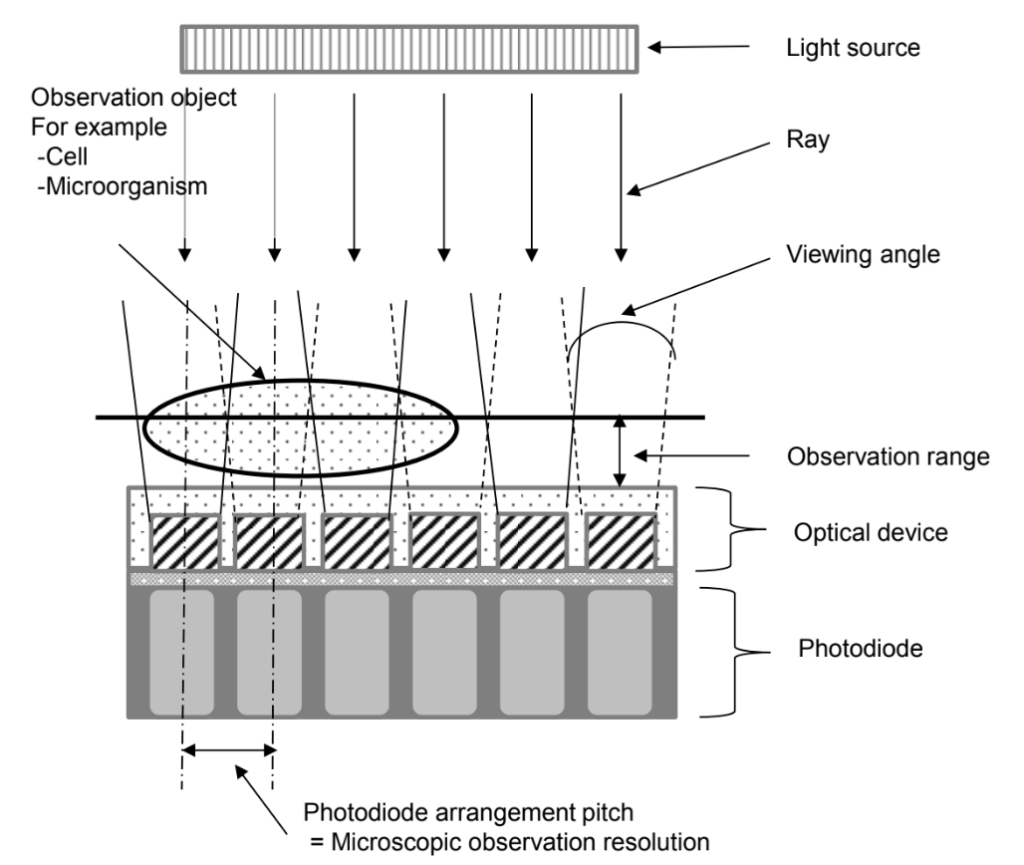In the vast expanse of the universe, the quest for understanding the minutiae of matter has been a relentless pursuit. From the vastness of galaxies observed through telescopes to the intricate details of microscopic objects seen through microscopes, the desire to see objects beyond the naked eye has driven countless innovations. As technology has advanced, and we have expanded our exploration of space, observations of both the macro and micro have moved to space as well. While Space Telescopes such as Hubble and James Webb may steal the attention with their stunning images, the advances in space microscopes are also of scientific importance. These space microscopes, instrumental for studying the effects of microgravity on the smallest of structures, have always had limitations due to the bulky and heavy optical equipment and lenses needed to see the microscopic world. One company, IDDK, first place winner of the 2023 SpaceTech Awards, however, decided to reinvent the space, creating a revolutionary microscope solution.
Microscopy in Space

Just like innovations have been brought to deep space telescopes, innovations have also been brought to space-bound microscopes as well. In space, the unique environmental conditions, namely microgravity, radiation, and vacuum, offer a plethora of opportunities for scientific research. However, traditional microscopes were ill-suited for space missions due to their size, weight, and sensitivity to environmental conditions. This led to the development of specialized microscopes for space applications, aiming to create compact, durable, and efficient microscopes that could operate in space’s unique conditions. These space-optimized microscopes flew to support experiments such as the Woodlawn Wandere 9 experiment on Skylab, as well as a video microscope on the Space Shuttle missions. More recently, the Light Microscopy Module, a “modified commercial, highly flexible, state-of-the-art light imaging microscope facility that provides researchers with powerful diagnostic hardware and software” is being used on board the International Space Station. Despite these advancements, these microscopes require lenses and optics to magnify, which adds significant weight to the microscope.
Microscope on a Chip
Based in Japan, IDDK is working on the bleeding edge of miniaturizing microscope technology. Traditionally, when we think of microscopes, we envision a device with a series of lenses that magnify objects, allowing us to see details invisible to the naked eye. These optical systems, while effective, come with limitations in size, weight, and adaptability. IDDK’s product challenges this norm by introducing a microscope that operates without the need for any lens, existing entirely on a chip’s sensor.

Born out of a challenge faced during semiconductor manufacturing, the essence of this chip lies in its unique ability to capture microscopic images using a specific “structure” that interacts with light. According to IDDK Co-CEO Kohei Yoshioka, during IDDK’s founder and CEO Soichiro Ueno’s time working at Toshiba, he was tasked with detecting minuscule dust particles on semiconductors. These particles, though tiny, could compromise the entire semiconductor due to the shadows they cast. It was during this endeavor that the potential of a semiconductor chip to capture microscopic images was realized. Ueno created a system whereby a photodiode collects light to display an image of what was placed on the sensor. From this, Uneo created a mico imaging device that required no optical system to render an image of the objects under observation. This novel approach does away with the significant amounts of optics and lenses needed to render an image. Through Toshiba, Ueno was able to patent this design, and IDDK currently has the exclusive to use this patent royalty-free.

But why is this lens-less chip so significant? Firstly, its compact nature offers unparalleled advantages. This miniaturization means that the chip can be integrated into a variety of platforms, from advanced research equipment to everyday consumer devices. An example of this is their integration of the chip onto a USB stick, allowing the user to view microscopic images by simply connecting the USB stick to a PC or phone. Furthermore, the chip’s design allows for cost-effective production. Without the need for manufacturing and calibrating intricate lenses, production costs can be significantly reduced. This not only makes the technology more accessible to researchers and enthusiasts alike but also opens the door for widespread commercial applications such as R&D labs, mobile devices, and food-tech production lines. Lastly, the extremely lightweight form factor of this chip makes it an ideal candidate for space research and applications.
Space Applications
One of the most promising arenas for this chip is space research. The challenging conditions of space, including microgravity, make traditional microscopy difficult. IDDK’s compact and efficient chip offers a solution tailor-made for such environments, enabling researchers to conduct detailed experiments on platforms like the International Space Station and beyond. The types of research that can benefit from such a chip include drug development, vaccine production, tissue engineering, cancer research, protein research, bone research, drug delivery, and antibiotic research.
Already, IDDK is working to bring this technology into use in space applications. According to Yoshioka, IDDK is aiming to launch its first mission to the International Space Station in June of 2024. Beyond this, IDDK looks to become a “One Stop Shop Microgravity Service” This means that they will help facilitate the process of launching designed unmanned satellites for microgravity research, working with research scientists who have experiments they wish to run in microgravity. IDDK will serve as the middleman and collaborate with satellite and launch partners, to deploy experiments in microgravity and collect sample returns for further analysis. According to McKinsey, the global market for bio experiments in microgravity will reach as high as $5.8 in 2025, and IDDK is already at work, paving the way for this new market. They have participated in the Starbust accelerator, as well as received investment from the likes of Toshiba, JAXA, DNP, and Misuzu Industries corporation to bring this groundbreaking innovation to the market. With several customers already lined up, IDDK is set to bring about big change, to microscopic exploration. Beyond space, the dual-use nature of their product offering also lends itself to the terrestrial microscope market. With this market valued at $11.1 billion in 2022, with 7.98% compounded annual growth expected, IDDK is also well positioned to capture significant market share on Earth to assist the next generation of discoveries.
About the SpaceTech Awards
One of the highlights of the annual Space Tech Summit is the SpaceTech Awards. Each year the SpaceTech Summit holds a startup competition that serves as a thrilling showcase of the best and the brightest new companies in the DeepTech and Space industries. Innovative startups from around the world compete to win funding, recognition, and the chance to showcase their technology to industry leaders and investors. This competition serves as a platform for the next generation of deep tech and space entrepreneurs, with the potential to bring new solutions to world challenges. In the most recent 2023 Space Tech Summit, IDDK, won first place for their Micro Imaging Device. Learn more about the SpaceTech Summit here

